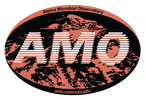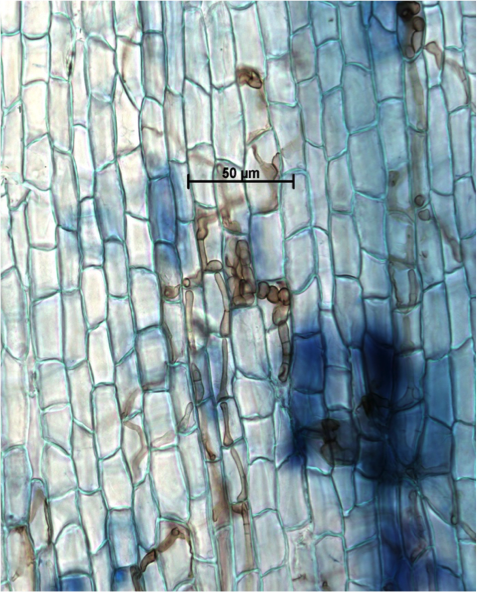|
Phialocephala fortinii By Cliff Bueno de Mesquita 4/6/17 Hello! Thanks for checking out the AMO’s new microbe of the month blog. Each month we’ll write something about one of the cool microbes that we are studying. This month’s microbe is a fungus by the name of Phialocephala fortinii, which we have been finding in our examination of microbes living on the roots of alpine plants in the Rocky Mountains, Colorado, USA. We sampled roots from 31 different plant species across an elevational gradient encompassing tundra meadows all the way up to sparsely vegetated rocky habitats by the continental divide. We looked at roots under the microscope and were able to see a number of different types of fungi including dark septate fungi (Figure 1).
Phialocephala is a genus of dark septate fungi, which get their name because of the dark brown color of their hyphae - filamentous, root-like fungal structures. The hyphae are also broken into segments, hence the name “septate” (Figure 1). This fungus appears to be an important mutualist with several alpine and polar plants, including pine trees, sedges, grasses, and rhododendron. In a mutualistic relationship, both parties benefit. In beneficial plant-fungal relationships, typically the plant gives the fungus carbon, and the fungus in exchange gives the plants nutrients such as nitrogen or phosphorus. In particular, research has shown that plants grown with Phialocephala fortinii on their roots have increased plant growth (biomass) as well as higher concentrations of nitrogen and phosphorus in the plant leaves, compared to plants grown without the fungus (Newsham, 2011). This suggests that the fungus does indeed help the plant acquire these nutrients, which is important for survival in the arctic and alpine. References: Newsham, K. K. (2011). A meta-analysis of plant responses to dark septate root endophytes. New Phytologist, 190(3), 783–793. http://doi.org/10.1111/j.1469-8137.2010.03611.x Schmidt, S. K., Sobieniak-Wiseman, L. C., Kageyama, S. a., Halloy, S. R. P., & Schadt, C. W. (2008). Mycorrhizal and Dark-Septate Fungi in Plant Roots Above 4270 Meters Elevation in the Andes and Rocky Mountains. Arctic, Antarctic, and Alpine Research, 40(3), 576–583. http://doi.org/10.1657/1523-0430(07-068)
2 Comments
Marcela Nancy Arteaga Cuba
1/17/2021 08:47:57 pm
Buenas noches, son datos muy interesantes y me gustaría seguir recibiendo alguna información sobre este tipo de hongos, ya que tengo aislado algo parecido pero sus hifas son cenocíticas y fueron aislados de rizosfera de bosques, y se comportan como endófitos para plántulas de arroz y otras.
Reply
Cliff Bueno de Mesquita
1/18/2021 01:42:27 pm
Estimada Marcela,
Reply
Leave a Reply. |
AuthorVarious lab members contribute to the MoM Blog Archives
October 2023
Categories |


 RSS Feed
RSS Feed
